Woman’s Attempt To Find Playmate For Her Cat Goes Wrong—Ends Up With New Nemesis Instead
Meet our narrator (Original Poster), a 19-year-old cat lover who thought she had found the purr-fect companion for her big orange tabby.
The tabby was adopted from a shelter eight months ago and had already settled into his new home with ease; he even mingled with the four dogs like a true feline diplomat.
However, OP felt her tabby, an ex-tomcat with FIV, needed a friend his size. So, she decided to adopt another orange tabby—also with FIV—hoping for a match made in kitty heaven. How wrong she was.
OP did everything by the book. She kept the new cat in a small, enclosed space with cozy hiding spots and gradually introduced it to its new friend.
The new cat seemed shy at first but soon started asking for attention. The next step was a meet-and-greet between the two cats through a baby gate. All seemed calm; the new kitty only meowed at her tabby—nothing alarming.
But then came the fateful face-to-face meetings. What started as a seemingly harmless meow escalated into a full-blown feline feud. The new cat pounced on the unsuspecting resident tabby, unprovoked.
Despite OP’s best efforts – bathroom retreats, territory swaps, and even mealtime peace negotiations – every encounter ended in a fur-flying brawl, with the new cat always being the aggressor.
After a month of tireless attempts to foster friendship, it became clear that this dynamic duo wasn’t meant to be. With a heavy heart, OP made the tough decision to return the new cat to the shelter.
Her love for both cats was undeniable, but the safety and well-being of her original, loyal tabby had to come first.
Let’s dig into the details

Here's the background of the story
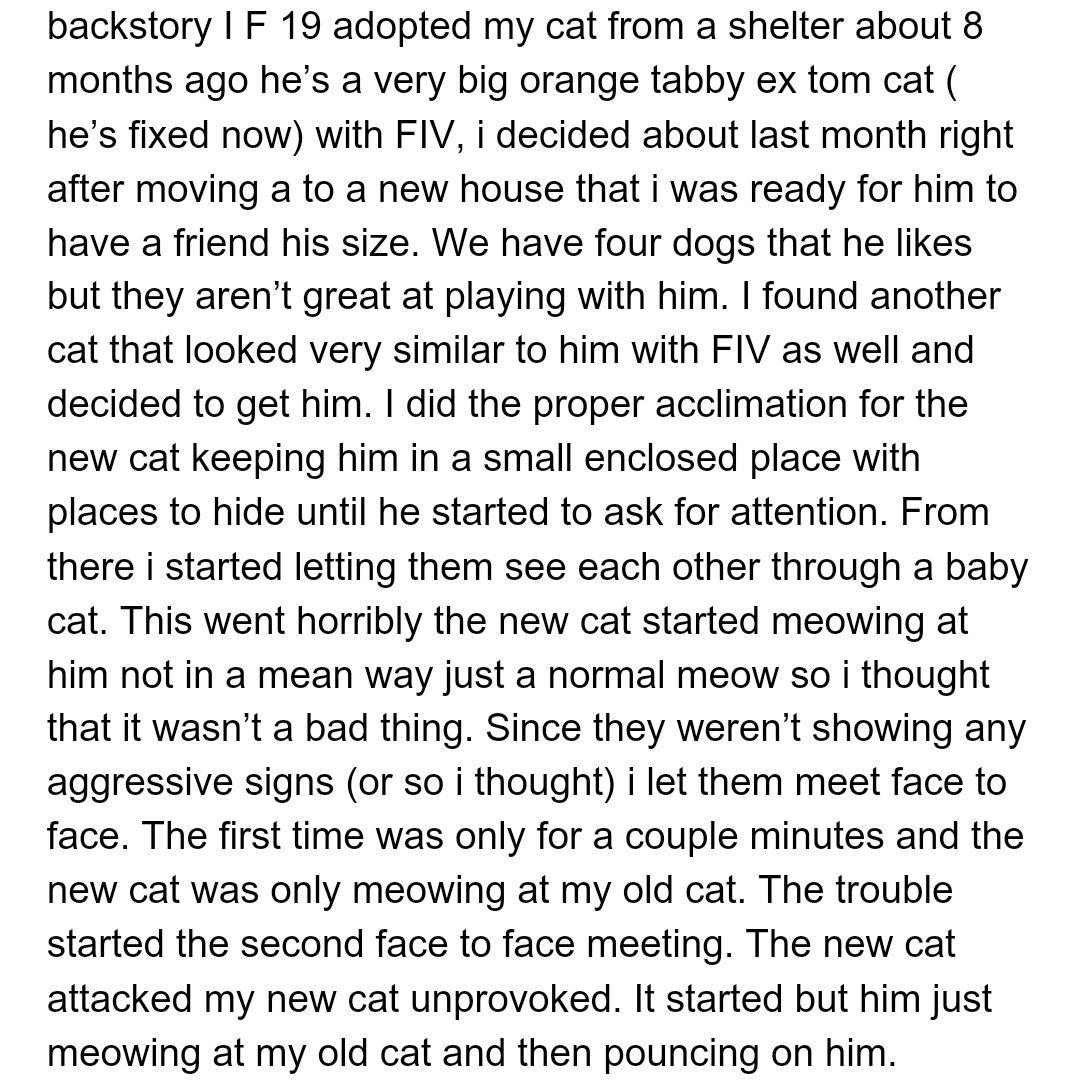
The Nature of Feline Socialization
According to Dr. Claire Rogers, an animal behaviorist, cats are inherently territorial creatures, and introductions to new playmates can be stressful.
Her research highlights that improper introductions can lead to negative associations and conflict between pets.
Understanding feline social structures is key to facilitating successful introductions and minimizing hostility.
OP adopted a new cat, but introducing it to her old cat and dogs resulted in repeated fights, with the new cat as the aggressor. After a month with no improvement, OP returned the new cat to the shelter, prioritizing her old cat's safety.
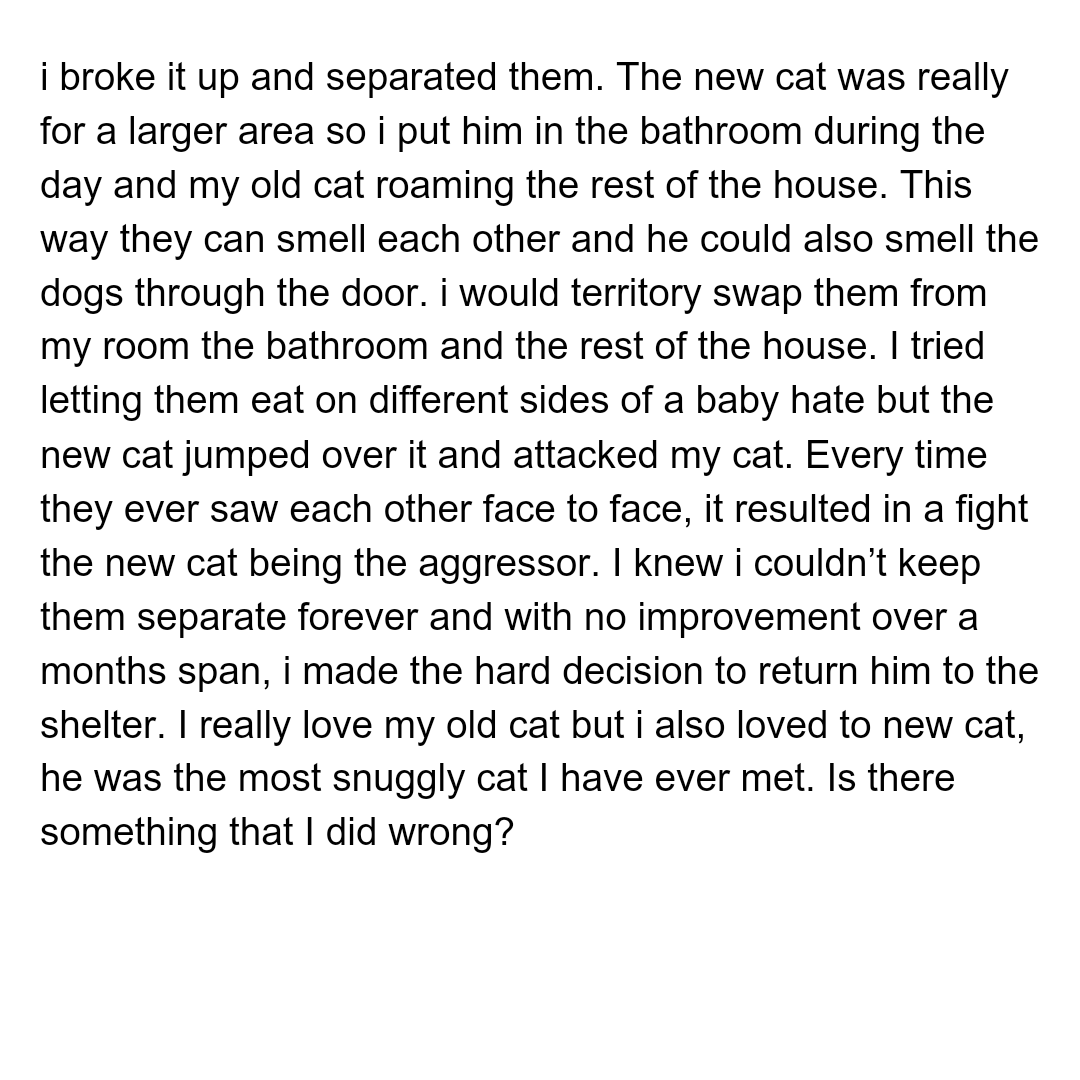
However, OP sent the new cat back to the shelter because it fought with her older cat. She tried to keep them safe, but it didn't work, so she chose to protect her older cat.
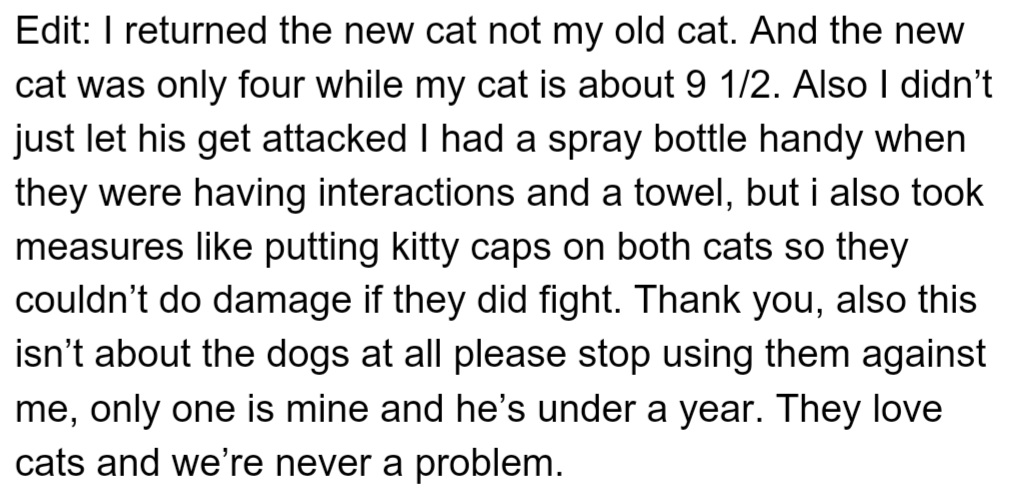
Behavioral studies suggest that cats communicate through body language and vocalizations, which are often misinterpreted by owners.
In cases where a new cat is introduced, monitoring these subtle cues can provide insights into their comfort levels.
Recognizing signs of stress, such as hissing or flattened ears, can help owners intervene before conflicts escalate.
Check out some intriguing comments we've gathered from the Reddit Community;

"You did your best, but the new cat was aggressive toward the old cat"

Effective Strategies for Introducing Cats
One effective method for introducing cats is through gradual acclimation.
Experts recommend keeping the new cat in a separate space at first, allowing both cats to become familiar with each other's scent before direct interaction.
This slow approach can reduce anxiety and foster a more positive introduction experience.
"YTA, you should have kept your old cat since the new one is the problem"
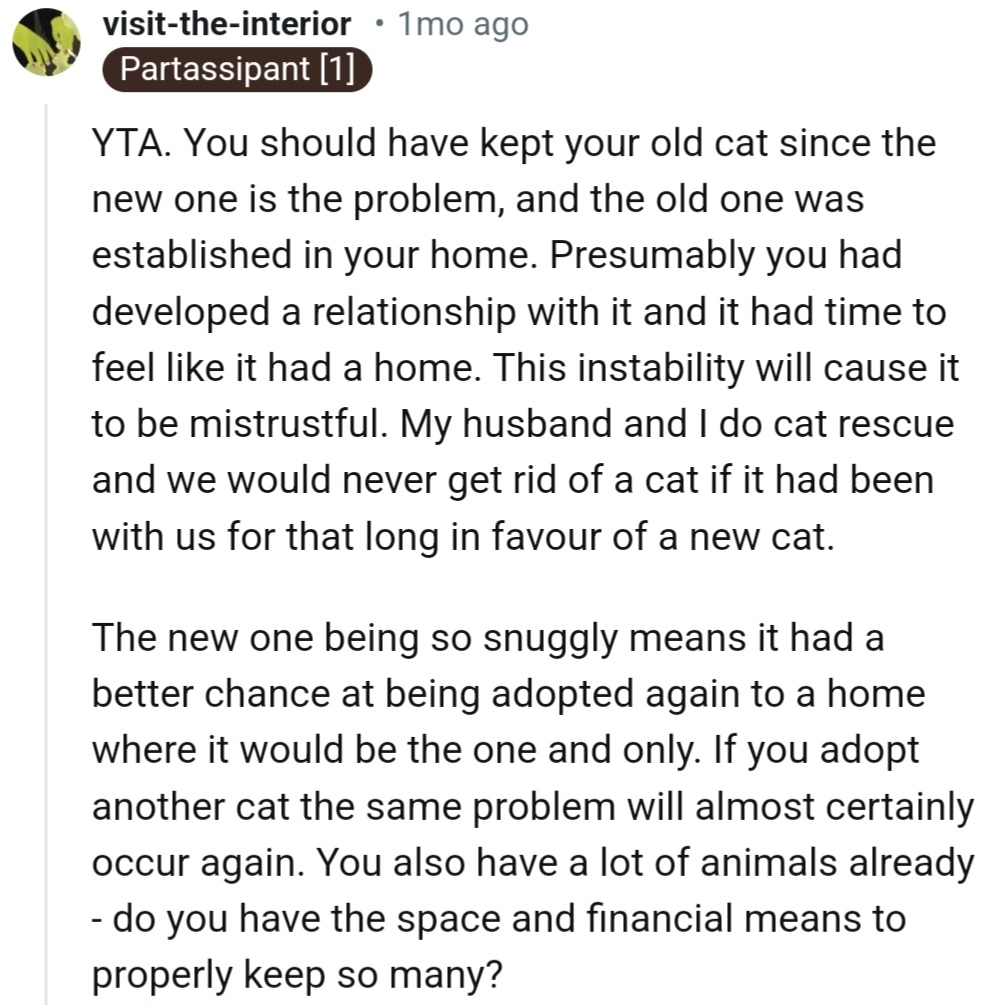
"The methods used were good for introducing new cats"
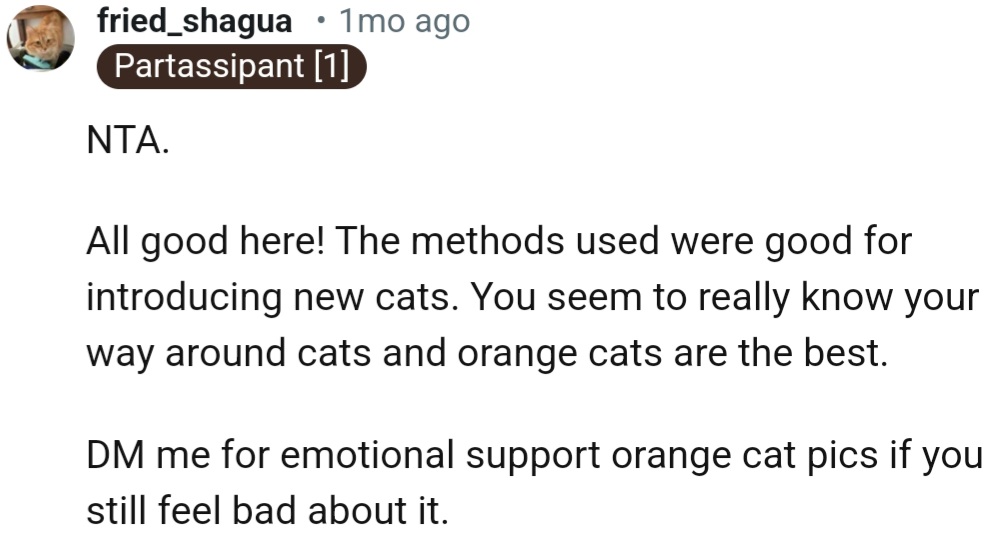
Moreover, providing vertical spaces, such as cat trees, can help cats establish their territory while also allowing them to observe each other from a safe distance.
Research indicates that creating opportunities for escape can minimize stress during introductions, allowing both cats to feel more secure.
Ultimately, patience and careful management are crucial in ensuring peaceful cohabitation.
"Sometimes certain cats just need to be the 'only cats'."

"If you still want to get your orange boy a friend, you may want to use the same methods"
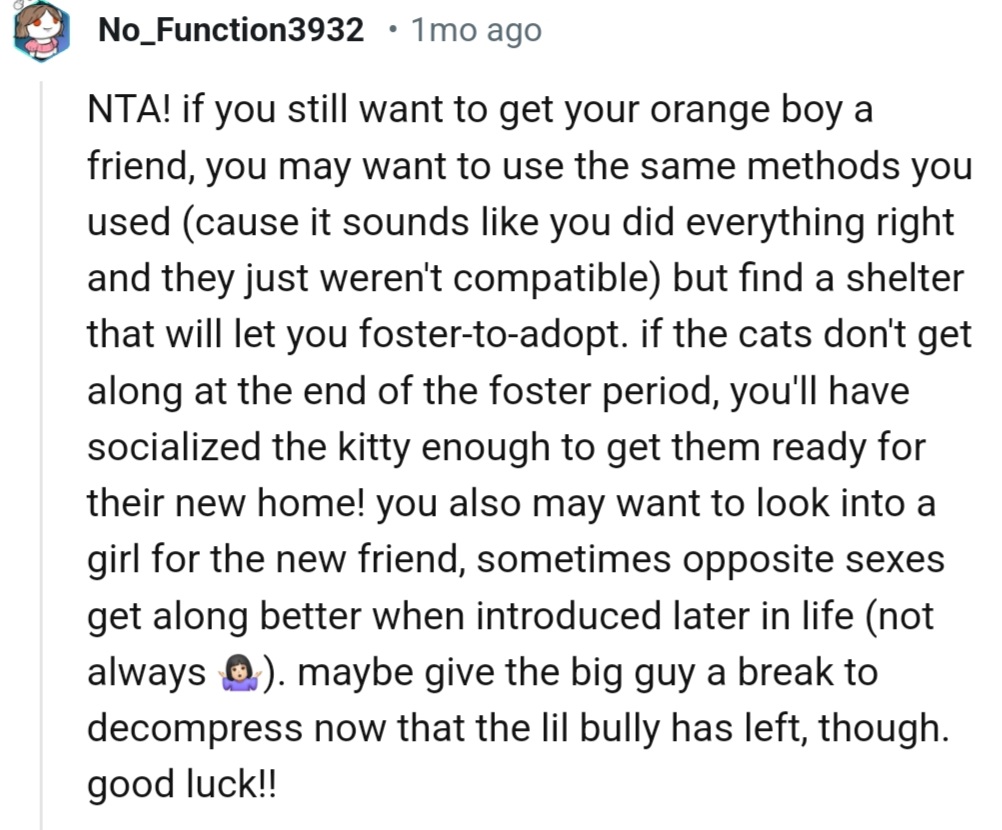
Redditors agreed that OP gave it her all, but sometimes, even the best-laid plans go astray. In the world of pets, just like in human relationships, compatibility is key—something the duo clearly wasn’t.
In the end, OP learned that not all cats were destined to be best buddies—and that's okay. The most important thing is that both felines find happiness, even if it's apart.
What do you think about this story? Share your thoughts with us.
"Do you keep new friends and ignore the old ones because the new friends are happier?"

"The shelter sucks for this irresponsible behavior"

The Role of Environmental Enrichment
Environmental enrichment plays a significant role in reducing stress and improving the well-being of both cats.
Engaging in interactive play and providing stimulating toys can help redirect aggressive tendencies.
Studies show that cats with enriched environments are less likely to exhibit problem behaviors, as they have multiple outlets for their energy and instincts.
Psychological Analysis
This scenario underscores the complexities of feline social interactions and the importance of managing introductions carefully.
Understanding these dynamics can help prevent conflicts and ensure a more harmonious living situation.
Analysis generated by AI
Analysis & Alternative Approaches
Understanding the dynamics of feline behavior, especially during introductions, is critical for promoting harmony in multi-cat households.
Research supports that gradual introductions and environmental enrichment can significantly reduce stress and aggression.
As highlighted by experts, taking the time to manage these interactions can lead to a more peaceful home environment for both pets and their owners.



